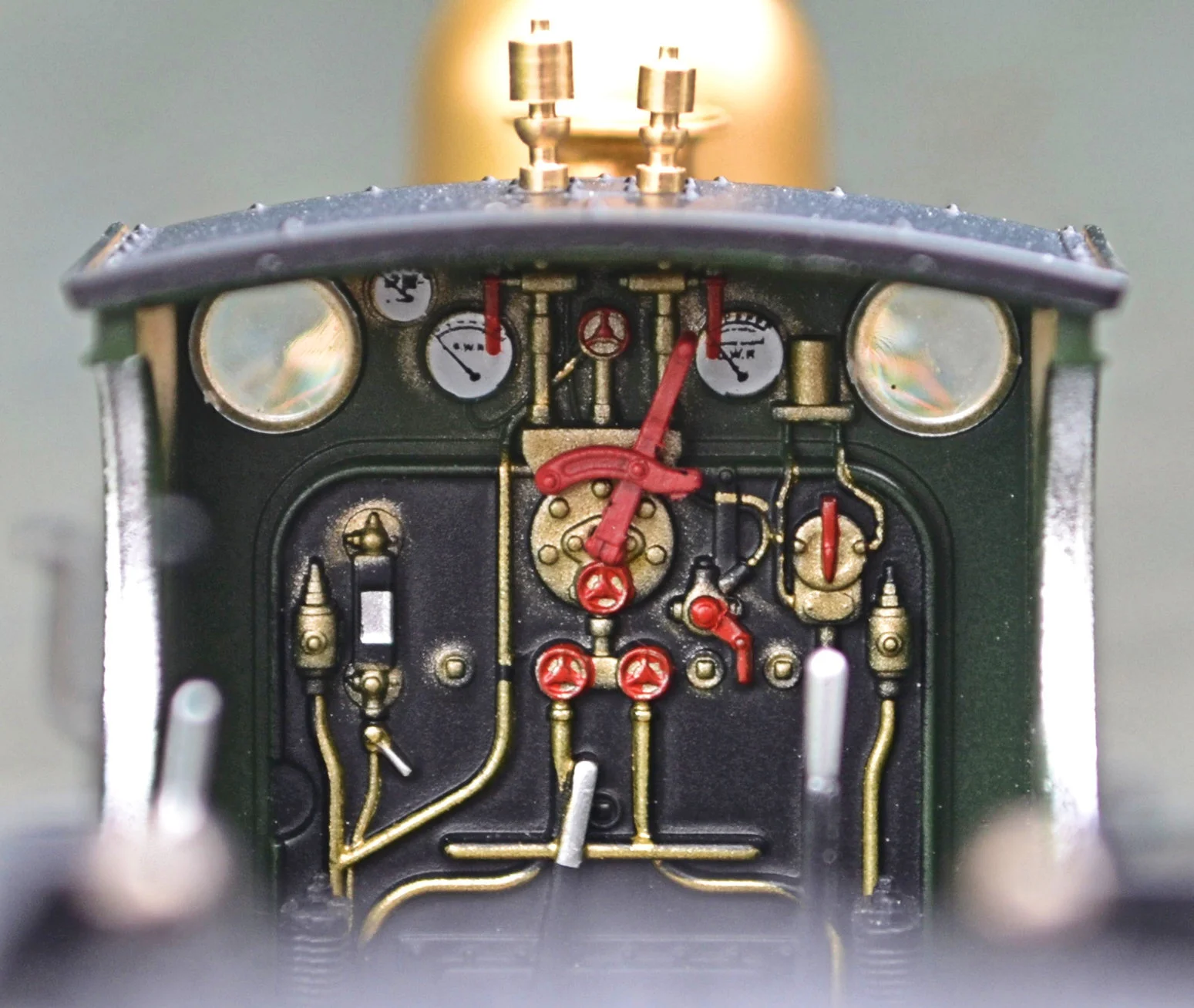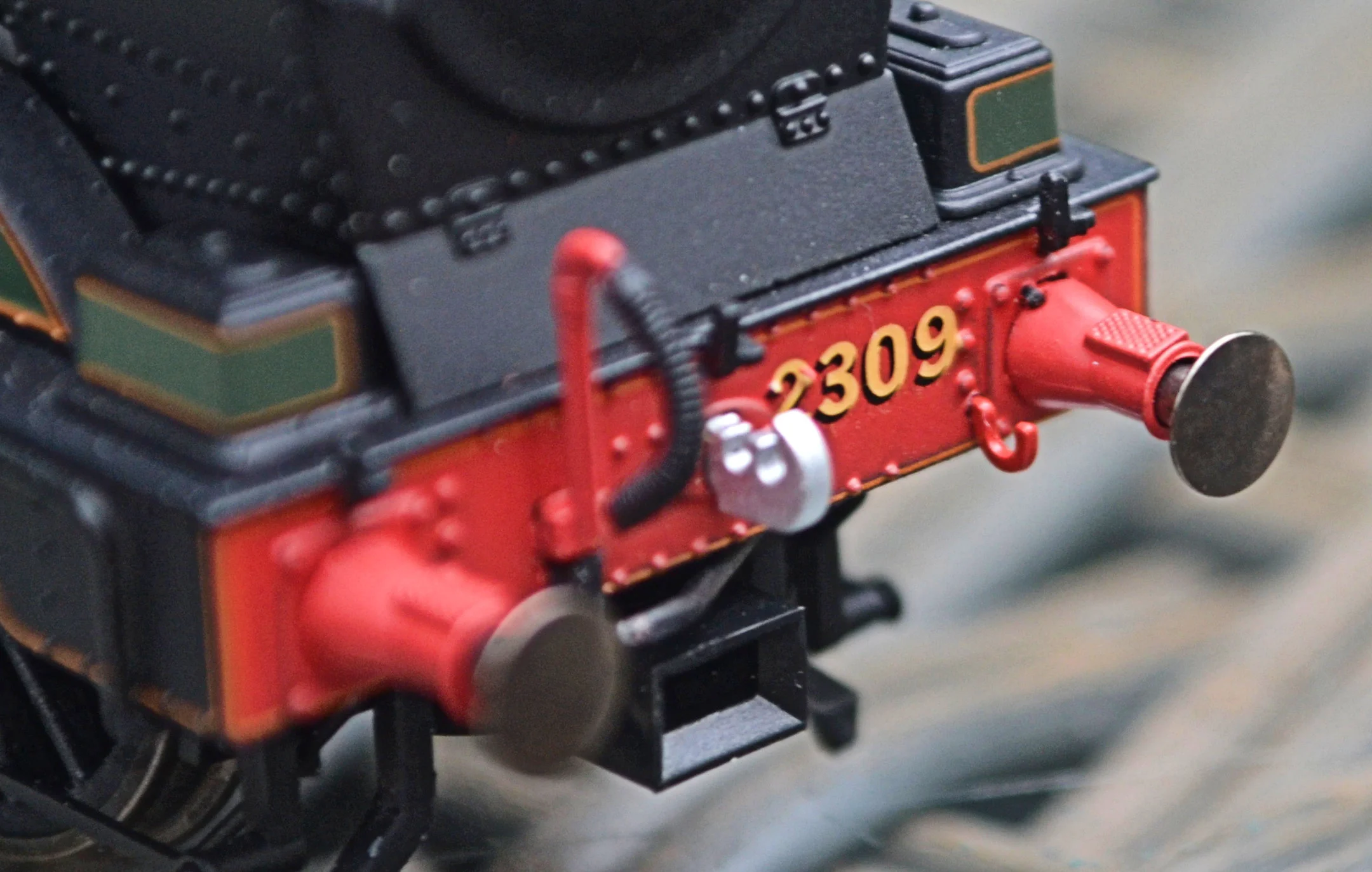Written by Tony Richards. Photos by Tony Richards & Gwion Rhys Davies. Many thanks to Oxford Rail for the loan of their latest model.
Introduction
For a manufacturer to produce for a mass-market a model locomotive which is to even 90% prototypically accurate is nigh on impossible: manufacturing and commercial constraints enforce compromise and, in the case of locomotives which went through many detail changes during their long lives, this is all the more so the case. Take Oxford’s new Dean Goods for example, their second steam locomotive release. Not perfect, but absolutely a Dean nevertheless and sufficiently so to please the vast majority of modellers. So why has it experienced such vitriolic criticism from a small band of disgruntled and dedicated grouches across one or two forums? I can’t answer that but if, in reading this, anyone wants to see the same, find something better to do with your time because you won’t find a dedicated obsession on the negative points here….
Ready-to-run model history
An r-t-r ‘OO’ Dean Goods has been available for nearly 40 years. The Airfix GMR system first showed illustrations of a planned model in their 1980 catalogue although it was Mainline who ultimately released it in late 1982. That model was later produced by Dapol and then, from 1998, by Hornby and although it is not in their current catalogue, it was until recently, the model enjoying a very long and essentially unchanged run.
The original Mainline Model, one of the first released [since detailed].
The Mainline Tender showing the obtrusive gear train.
This original Dean was tender driven and traction-tyre equipped. The loco body was detailed for the time and viewed as being close to the prototype, but the tender was criticised for its excessively high coal load [to accommodate the Ringfield motor] and visible gear-train. The photograph shows this well, illustrating that an upgrade was clearly needed. Consequently, Oxford’s announcement that they would be producing a new model was welcomed, an improved Dean having been near the top of many magazine and forum wish-lists for some years.
The Oxford model
2309, the new Oxford Rail release.
The review model, lent by Oxford, represents 2309, an early 1880s build of the class. Liveried in post-1906 fully-lined Great Western green with ‘brass’ dome and safety-valve bonnet [and with top-feed, suggesting a post-1913 re-build], this is the first release of their Dean and it will be followed by other models, including GWR plain green and BR black, in due course. The lining is neatly applied – that on the front sand boxes particularly so, and very fine – and, overall, the paintwork is excellent with no external overspray noted. The copper capuchon on the chimney is rather too brassy however and would benefit from careful re-painting – a simple task. The reviewer was also uncertain as to whether the smoke-box handrail should have been green [as modelled] or black: whatever, it does not spoil the appearance of the loco and if a remedy is required, it can be very simply and quickly undertaken.
The interior cab detail is an absolute tour-de-force and raises the bar massively in terms of realism. Being open-cabbed, good back-head detail was always going to be important, Oxford has excelled here however and even the dials have legible printing. The wooden planked floor is painted, the reversing lever prominently modelled, a neat and positionable fall-plate is fitted and the cab spectacles are glazed. All handrails are neatly attached and so are not flush mouldings – no ‘design clever’ in evidence here!
Looking forward along the body from the cab, the model captures the slim outline of the prototype quite convincingly and modellers might wish to customise this further by carefully positioning a driver and fireman [and perhaps adding some fire irons on the tender]. The cut-out on the cab side sheets is not wholly accurate for 2309 however, the profile of the curve not quite matching the prototype and is perhaps closer in outline to the later builds of this class. Further, as has been pointed out elsewhere, the splashers should not have riveted bottoms [that said, they are not particularly visible]. In practice, I doubt whether either of these discrepancies will concern the vast majority of modellers and certainly will not deter me from buying a model when the all-green GWR version is released.
Below the footplate, the wheels and motion are pleasingly toned and the brake detail well modelled. The pull rods are quite fine but made with some flexibility and so should withstand handling. Sanding pipes are fitted, the buffers are sprung and – a really nice touch – the buffer beam has a small hook for attaching the [real] front coupling when it is not in use. I’ve not seen this modelled in r-t-r before. Pick up is from all six wheels.
The tender, a standard Dean 2,500 gallon unit, is a considerable improvement on the older Hornby 3,000 gallon release, not least because of daylight being visible under the body. Separate brake fittings [along with the usual dummy couplings, etc] are supplied for fitting by the purchaser and a water scoop is clearly visible ahead of the rear axle. The Garter crest on the tank sides has legible writing [although a lens is required!]. A semi-permanent coupling joins the tender to the locomotive and pick-ups are fitted to the front and rear axles. A DCC socket has been fitted towards the rear of the inside of the body.
Performance
Oxford’s Dean is fitted with a 5-pole double flywheel motor. The review model ran absolutely flawlessly straight from the box although, sensibly, a period of gentle running-in was allowed too. It was quiet [unlike the vast majority of Ringfield-fitted tender-drive Deans], controllable and sufficiently powerful to manage prototypical freight or passenger loads. Pick-ups on 10 wheels and the flywheel provision undoubtedly contributed to this. Enough said!
Conclusion
Returning to my opening comment, some degree of compromise will always be necessary when producing for a wide market a class of locomotive which was not only long-lived but also subject to detail changes. Consequently, an objective review has to cope with something of an un-level playing field. Oxford has produced a genuinely believable model however and whilst their Dean has some detail faults, it remains recognisably a Dean in every sense: a considerable achievement for a sub-£100 locomotive [in fact sub-£90 in some outlets]. This, coupled with its good performance and improved tender design, places it far ahead of the earlier r-t-r models of the class and I am very much looking forward to the later all-green release becoming available.











